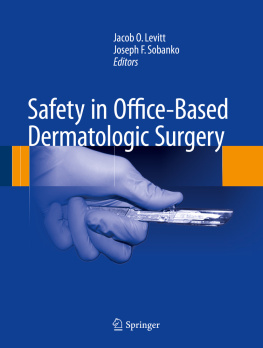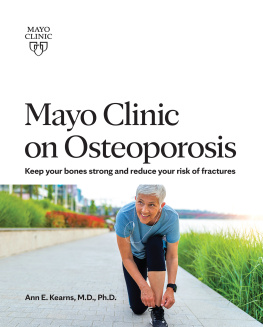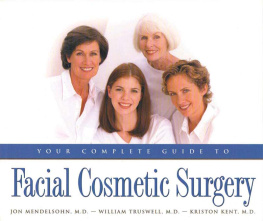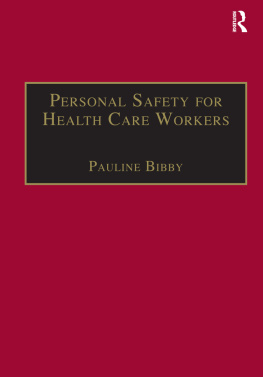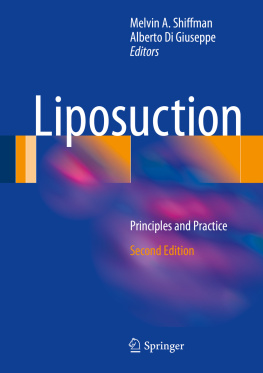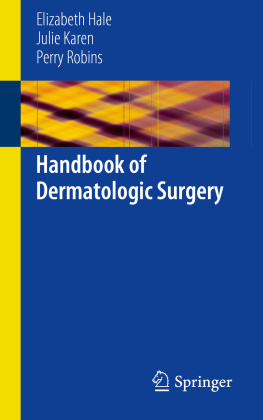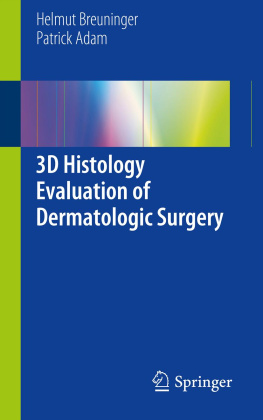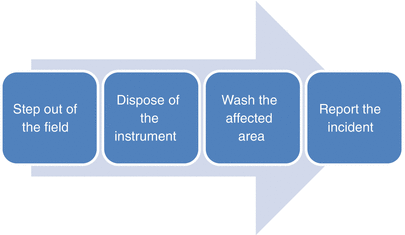Springer International Publishing Switzerland 2015
Jacob O. Levitt and Joseph F. Sobanko (eds.) Safety in Office-Based Dermatologic Surgery 10.1007/978-3-319-13347-8_1
1. Occupational Exposures: Epidemiology and Protocols
Joseph F. Sobanko 1
(1)
Department of Dermatology, Perelman School of Medicine at the University of Pennsylvania, Philadelphia, PA, USA
Keywords
Occupational exposure Needle sticks HIV Viral load Post-exposure prophylaxis PEP Healthcare workers Hepatitis B Hepatitis C Percutaneous injuries Transmission Contaminated Blood Splash Mucous membrane Hollow-bore
Why Is This Information Important?
Up to 800 , 000 needle sticks occur to healthcare workers in the United States each year [].
The healthcare workers most susceptible to blood exposure injuries are physicians-intraining (residents), nurses, and medical students [].
One of every ten US health care workers has a needle stick exposure each year [].
HIV , Hepatitis B and C are the pathogens most likely to be transmitted via an occupational exposure.
Percutaneous injury is the most efficient mechanism of transmission of occupational blood - borne infection s (HIV, HCV, HBV).
A person receiving a needle stick with known-HIV contaminated blood has a 0.35 % of acquiring the virus [].
The risks of acquiring HBV or HCV through a needle stick are 535 and 310 %, respectively [].
4050 % of suture needle sticks occur while suturing [].
2/3 of suture needle sticks are self-inflicted [].
Outpatient procedures most prone to result in an exposure are injection, suturing, and excision [].
Can Exposures Be Avoided Completely?
Despite the best attempts at prevention, occupational exposures in the form of needle sticks and splashes do occur.
It is essential to be familiar with your office/institutions individual protocol for reporting such incidents. If you are unfamiliar with the protocol, you must immediately report the incident to your supervisor in the event of an exposure.
Most occupational exposures go unreported PLEASE REPORT YOUR INJURY .
The action taken after an occupational exposure will often depend on the exposure risk (Table ).
Table 1.1
Features of a high-risk occupational exposure []
Exposure to a larger quantity of blood or other infectious fluid |
Prolonged or extensive exposure of non-intact skin or mucous membrane to blood or other infectious fluid or concentrated virus in a laboratory setting |
Exposure to the blood of a patient in an advanced disease stage or with a high viral load |
A deep percutaneous injury |
An injury with a hollow-bore, blood-filled needle |
What Do I Do in the Event of an Occupational Exposure (Fig. )?
Any employee who receives a stick during a surgical procedure should step out of the field and avoid further contact with the patient to prevent potential transfer of blood-borne pathogen from healthcare worker to patient.
Dispose of the instrument that has punctured the skin (i.e., suture needle, syringe) rather than reintroducing it to the patient.
Those with a needle stick should wash the affected area thoroughly with soap and water as quickly as possible after the exposure [].
It is not necessary to use alcohol or other caustic agents such as bleach to clean the affected area.
The practice to milk out more blood is controversial and not recommended by the Centers for Disease Control (CDC).
Irrigate splashes to the eyes or mouth with water or saline as quickly as possible after the exposure. Do not use caustic agents such as antiseptics or disinfectants.
Report the exposure immediately [].
Fig. 1.1
Four simple steps to follow in the event of an occupational exposure []
How Do I Report the Incident (Table )?
If the source patient is known then the patient should be tested for HIV/HBV/HCV (pending informed consent).
The CDC recommends that if the source patient cannot be tested then the medical diagnoses, clinical symptoms, and history of risky behaviors should contribute to the decision regarding post-exposure prophylaxis (PEP) [].
When the source patient is not known then the likelihood of high risk exposure must be evaluated and used to guide further action (i.e., community infection rate, demographics of patients seen at site, etc.).
Baseline testing of healthcare practitioners should be performed for all occupational exposures.
Those exposed to HIV should receive repeat HIV-antibody testing at 6, 12, and 24 weeks following exposure [].
Those exposed to HCV should have repeat tests for anti-HCV IgG and liver enzyme (ALT) at least 46 months after exposure.
Table 1.2
Necessary information when reporting an occupational exposure
Details of the incident (type of bodily substance involved, the route of exposure, the severity of exposure, time exposure occurred, etc.) |
Details of the exposure source , if known (e.g., source material or patient HIV/HBV/HCV positivity) |
Details of the exposed healthcare provider s history (e.g., vaccination status, pregnancy status, medical conditions, etc.) |
Should I Take Post-Exposure Prophylaxis (PEP)?
HIV
The recommendation to initiate antiretroviral prophylaxis is determined by the factors noted above, in addition to balancing the risk of HIV with the known risks of PEP medications [].
PEP rapidly loses its effectiveness if delayed. The goal should be to swallow the first pill within the first 2436 h after exposure. Some reports note that if it is started more than 72 h after exposure then it is not effective [].
PEP regimens continued for less than 4 weeks are also considered less effective [].
The specific medication regimen will vary according to each institution. Two-drug regimens appear appropriate for low-risk exposures while three-drug regimens may be recommended for higher-risk exposures. These regimens change as new medications become available and as local resistance patterns change. Keep abreast of what the current recommendations are from Infection Control departments in the health care settings in which you work.
Baseline laboratory studies should be performed (e.g., CBC, CMP, HIV test, Hep C ELISA, Hep B sAg, Hep B sAb) if PEP is initiated.

